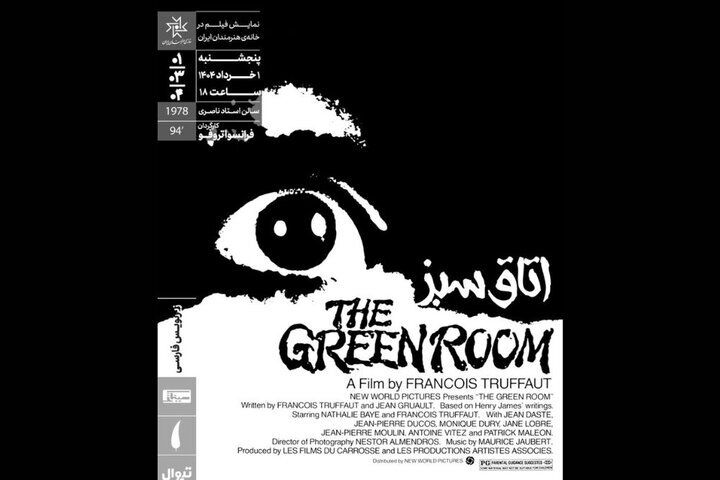François Truffaut’s “The Green Room” to be shown at IAF

TEHRAN – The Iranian Artists Forum (IAF) in Tehran will screen the 1978 French historical drama film “The Green Room” directed by François Truffaut on Thursday.
The 94-minute movie will be shown with Persian subtitles at the Nasseri Hall of the IAF at 6 p.m., Mehr reported.
“The Green Room” is based on the 1895 short story “The Altar of the Dead” by Henry James, in which a man becomes obsessed with the dead people in his life and builds a memorial to them. It is also based on two other works by James: the 1903 novella “The Beast in the Jungle” and the 1896 short story “The Way It Came”. It was Truffaut's 17th feature film as a director and the third and last of his own films in which he acted in a leading role. It stars Truffaut, Nathalie Baye, Jean Dasté and Patrick Maléon.
Truffaut spent several years working on the film's script and felt a special connection to the theme of honoring and remembering the dead. In the film, he included portraits of people from his own life at the main character's “Altar of the Dead”.
The story happens in a little French town, at the end of the twenties. Julien Davenne is a journalist whose wife, Julie, died a decade ago. He gathered in the green room all Julie's objects. When a fire destroys the room, he renovates a little chapel and devotes it to Julie and his other dead persons.
“The Green Room” was one of Truffaut's most praised films, and also one of his least successful works financially. It was made towards the end of Truffaut's career, and thematically the film contrasts to his earlier works. “The Green Room” appears to reminisce on childhood, whilst focusing more on the final stages of life, as Truffaut expresses his views of death and remembrance of the dead. Nonetheless, the alternative theme of the film again reflects Truffaut's sense of personal expressionism throughout his career.
François Roland Truffaut (1932-1984) was a French filmmaker, actor, and critic. He is widely regarded as one of the founders of the French New Wave. He came under the tutelage of film critic Andre Bazin as a young man and was hired to write for Bazin's Cahiers du Cinéma, where he became a proponent of the auteur theory, which posits that a film's director is its true author. “The 400 Blows” (1959), starring Jean-Pierre Léaud as Truffaut's alter-ego Antoine Doinel, was a defining film of the New Wave. Truffaut supplied the story for another milestone of the movement, “Breathless” (1960), directed by his Cahiers colleague Jean-Luc Godard.
His other notable films include “Shoot the Piano Player” (1960), “Jules and Jim” (1962), “The Soft Skin” (1964), “Two English Girls” (1971), and “The Last Metro” (1980).
Truffaut's “Day for Night” (1973) earned him the BAFTA Award for Best Film and the Academy Award for Best Foreign Language Film.
He wrote “Hitchcock/Truffaut” (1966), a book-length interview with his hero Alfred Hitchcock, which tied for second on Sight and Sound's list of the greatest books on film. Truffaut paid homage to Hitchcock in “The Bride Wore Black” (1968), “Mississippi Mermaid” (1969,) and his last film, “Confidentially Yours” (1981).
SS/SAB
